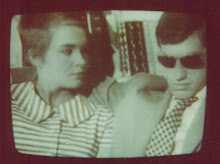 When I saw the clips from Robert DeNiro's films at The Golden Globes as he received the lifetime achievement award, I was curious to see this one again.
When I saw the clips from Robert DeNiro's films at The Golden Globes as he received the lifetime achievement award, I was curious to see this one again.The story took place about ten years before the film opened as three buddies in a small Pennsylvania steel town were preparing to head off to Vietnam--Mike (DeNiro), Steven (John Savage), Nick (Christopher Walken). The film opens with Steven and Angela's wedding. Linda (Meryl Streep) is the maid of honor who Nick proposes to by the end of the night. The men go off on one last deer hunting expedition before they say their goodbyes.
The three friends arrive fully into the grimness of that war. Somehow they all end up prisoners at the same riverside camp where they are forced to play Russian Roulette. This experience begins to drive Steven mad, but Nick and Mike endure to outsmart the prison guards long enough to shoot them and escape.
They are floating dowstream when a helicopter is able to rescue Nick only. Mike and Steven run into trouble when Steven falls and breaks both legs. Mike manages to rescue him through the jungle to safety. Nick is psychologically damaged and lost in the Saigon red light district where he gambles at Russian Roulette. Mike spotted him one night, but was unable to track him down before his flight back to Pennsylvania.
Mike returns a decorated war hero in full uniform, eager to see Linda, who he pined for--even through he is Nick's girl. Both Nick and Mike were each shown during the war pulling out the same small high school photo of Linda to get them through the hard times. She is waiting for Nick, but seems equally wanting something more with Mike. Mike is unsettled back home without his buddies. He learns that Steven has been sent home a double amputee and remains hidden away in the veteran's hospital, ashamed to see his friends. Mike seeks him out and Steven has been receiving mysterious envelopes of money from Viet Nam. This moves Mike to return to Saigon to find Nick.
Mike arrives in Saigon as it has become occupied by the Viet Cong--people were being shipped out, fires from bombs burned in the streets. Mike found Nick an empty shell of his former self, but he managed to face him in a match at the Roulette table, hoping to wake him up from the nightmare. Mike failed to stop Nick from the suicidal game. Instead, he brought Nick's body home for a funeral. The friends mourn together at a cemetary next to the steel mill and go off deer hunting once again after the funeral--for Nick. I like the bookend effect, but I kept thinking that the landscape appears much more spectacular than my vision of Pennsylvania.
Michael Camino's film is mostly colorless except for intentional bright spots--the red bandannas worn by the men at the Russian Roulette table, red blood, the flowers on Nick's coffin. The cinematography is dark and under-lit and many of the scenes take place at night. The movie is clearly anti-gun, despite the guns of the hunt, war and roulette table. Over and over, they are proven to be evil. Mike is unable to kill a deer during the final deer hunt.
The community assemble for a gathering at the local bar to complete the mourning. As the cook is preparing eggs for the group, he begins singing "God Bless America." Linda joins him and eventually all the others join in the singing. Sounds corny, but it is quite moving-- real. A lot was broken during that time and the movie nails it. Seeing DeNiro, Streep and Walken in their younger days is like seeing old friends. They have become such fixtures of Amerian film. Although he is not an "A-list" celebrity, John Savage continues to act in many movies. He is amazing in this one. John Cazale was cast as Stanley, one of the local friends. He was romantically involved with Meryl Streep at the time of shooting, but sadly, he died of lung cancer soon after this film. Only forty-two, he had already been featured in The Godfather and Dog Day Afternoon.




